Nestled in the heart of the Galápagos archipelago, Darwin Island emerges as a beacon of natural history and biological wonder. This remote paradise, named in honour of Charles Darwin, is a testament to the groundbreaking research that reshaped our understanding of the natural world.
A Legacy Carved by Nature and Time
- A Natural Laboratory: Darwin Island offers a unique glimpse into the untouched ecosystems that have thrived for centuries, making it a crucial site for scientific research and ecological studies.
- Charles Darwin’s Living Legacy: In the Galápagos Islands, Charles Darwin gathered pivotal observations, leading to the formulation of his theory of evolution by natural selection. Darwin Island, in particular, embodies the natural laboratory where much of this critical thought process unfolded.
An Unparalleled Biodiversity
- A Sanctuary for Wildlife: Home to some of the most unique species on the planet, Darwin Island’s biodiversity is unparalleled. Its isolated location has allowed for the development of extraordinary wildlife, both above and below the water’s surface.
- Conservation and Wonder: Conservation efforts on Darwin Island and throughout the Galápagos aim to preserve this natural wonder. They ensure that future generations can continue to learn from and be inspired by the remarkable ecosystems that contributed to one of history’s most significant scientific discoveries.
Darwin Island offers a window into the past. He inspires present and future explorations into the mysteries of the natural world. As we embark on this journey through Darwin Island’s landscapes and history, we are reminded of the profound impact that a single individual’s curiosity about the natural world can have on our collective understanding of life on Earth.
The Historical Significance of Darwin Island
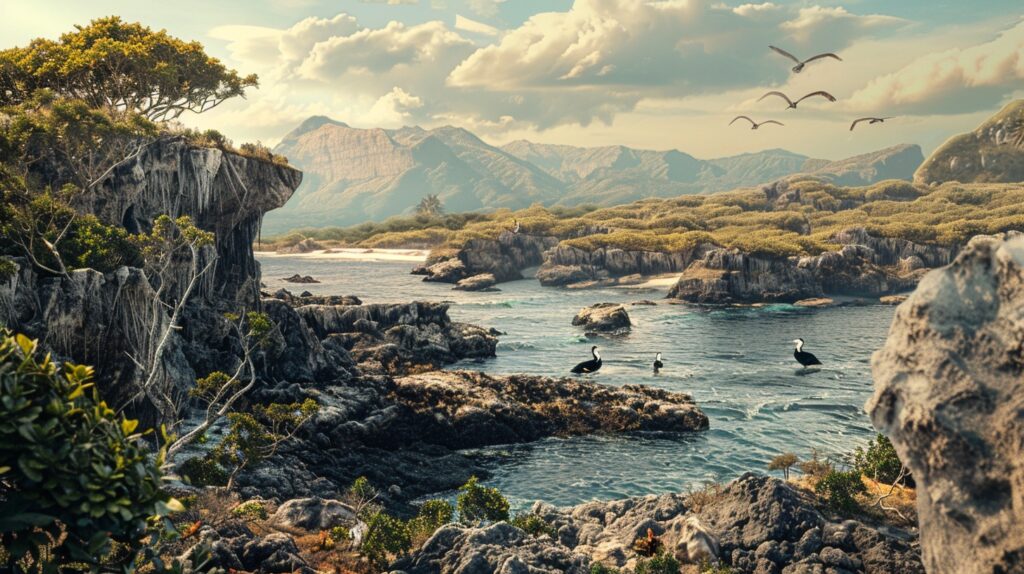
Darwin Island, a jewel among the Galápagos archipelago, holds a pivotal place in the annals of natural history. Its roots trace back to the transformative journey of Charles Darwin, whose observations within these islands catalysed a revolution in our understanding of the natural world.
In 1835, aboard the HMS Beagle, Charles Darwin arrived at the Galápagos Islands. This visit was part of a global expedition. Still, it was here, in this isolated cluster of islands, that Darwin’s observations would sow the seeds for evolutionary biology.
Among Darwin’s most significant observations were the variations in the beaks of Galápagos finches. He noted that finch species on different islands had different beak shapes, each adapted to their specific feeding habits. This insight was crucial in developing his theory of natural selection.
Darwin also observed other unique species, such as the Galápagos tortoises and marine iguanas, which exhibited traits tailored to their specific environmental conditions. These observations further supported his ideas about adaptation and evolution.
Darwin’s experiences in the Galápagos Islands culminated in the publication of “On the Origin of Species.” This groundbreaking work introduced the theory of evolution by natural selection, challenging existing views on the creation and development of life.
The Galápagos Islands, particularly Darwin Island, have become synonymous with evolutionary study. The islands are not just a site of historical significance but also a continuing source of scientific discovery, attracting researchers worldwide.
Darwin Island and the Galápagos archipelago stand as a testament to the profound impact that careful observation and scientific inquiry can have on our understanding of the natural world. Charles Darwin’s legacy in these islands underscores the importance of preserving such unique environments for their intrinsic value and continued contribution to our knowledge of life on Earth.
Exploring Darwin Island: A World Untouched by Time

Darwin Island, a hidden gem within the enchanting Galápagos archipelago, is a testament to nature’s raw, unbridled power. This secluded paradise, named in honour of the legendary naturalist Charles Darwin, offers a unique window into the intricate web of life that has evolved in isolation from the rest of the world.
The Geography of Darwin Island
Characterised by its steep, volcanic cliffs and rugged terrain, Darwin Island rises majestically from the Pacific Ocean, offering breathtaking vistas that are as beautiful as they are dramatic.
Below the water’s surface, Darwin Island boasts some of the most spectacular diving spots in the world. The nutrient-rich currents attract a dazzling array of marine life, making it a haven for divers and marine biologists.
A Sanctuary for Unique Ecosystems
While the island’s harsh volcanic landscape may seem inhospitable at first glance, it is home to various plant species that have adapted to thrive in this unique environment. From the hardy lichens that cling to the rocks to the salt-tolerant mangroves along the coast, the flora of Darwin Island is a study of survival and adaptation.
Darwin Island’s skies are ruled by an impressive array of bird species, many of which are found nowhere else on Earth. Among the most famous are Darwin’s finches, whose varied beak shapes illustrate natural selection at work.
The Marine Ecosystem: A World-Class Dive Site
The waters surrounding Darwin Island are a marine sanctuary teeming with life. Divers can encounter schools of hammerhead sharks, graceful manta rays, and playful dolphins within the backdrop of vibrant coral reefs.
Perhaps the most awe-inspiring visitors to Darwin Island’s waters are the sea’s gentle giants: whale sharks. These colossal creatures, the largest fish in the ocean, are often spotted in the area, adding a touch of majesty to the already extraordinary underwater landscape.
Conservation Efforts: Preserving Paradise
The unique ecosystems of Darwin Island and the Galápagos Islands face constant threats from climate change and human activity. Conservation efforts are crucial to preserving this irreplaceable natural heritage for future generations.
The Galápagos National Park and various international organisations work tirelessly to protect and study the island’s ecosystems. These efforts ensure that Darwin Island remains a living laboratory and a beacon of hope for conservationists worldwide.
Darwin Island offers a rare glimpse into a world where nature reigns supreme, untouched by the passage of time. Its unique geography and biodiversity provide invaluable insights into the processes of evolution and adaptation and remind us of the importance of preserving our planet’s precious natural wonders.
Darwin’s Legacy in the Galápagos: The Birthplace of Evolutionary Biology
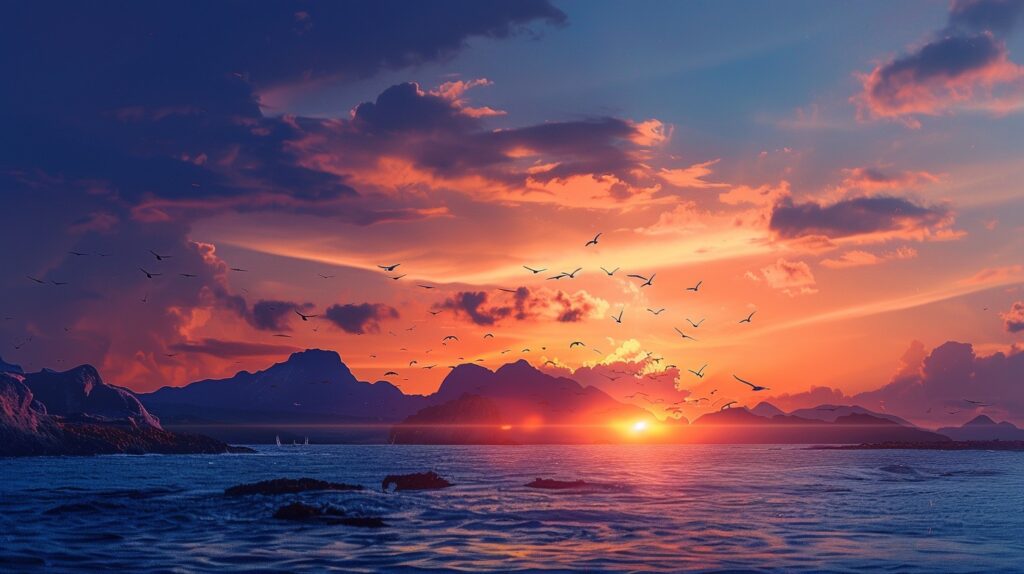
Charles Darwin’s voyage to the Galápagos Islands in 1835 marked the beginning of a scientific journey that would forever alter our understanding of life on Earth. The unique biodiversity of the Galápagos served as both inspiration and evidence for Darwin’s revolutionary theory of evolution by natural selection. This legacy continues to resonate throughout the scientific community and beyond.
Darwin’s observations in the Galápagos Islands provided critical insights into how species adapt to their environment over time. The varied beak sizes of Galápagos finches, tailored to their specific feeding habits, became a pivotal example of natural selection in action.
In 1859, Darwin published “On the Origin of Species,” laying the foundational principles of evolutionary biology. His work, rooted in the data collected from the Galápagos, challenged the prevailing notions of the time and introduced a new paradigm for understanding biodiversity.
Today, the Galápagos Islands remain a vibrant hub for scientific research. Biologists, ecologists, and conservationists worldwide come to study the islands’ ecosystems, contributing to our ongoing understanding of evolution, conservation, and the natural world.
The Galápagos Islands’ significance to evolutionary biology has underscored the importance of conservation efforts. Protecting the unique flora and fauna of the Galápagos is crucial for preserving their scientific value and maintaining the delicate balance of these island ecosystems.
Darwin’s work in the Galápagos inspires students, scientists, and nature enthusiasts. The islands serve as a living classroom, offering invaluable lessons on adaptation, survival, and the interconnectedness of all life.
The ongoing research in the Galápagos Islands contributes to our broader understanding of biodiversity, ecosystem dynamics, and the impacts of climate change. This knowledge is critical for informing global conservation strategies and safeguarding biodiversity worldwide.
Darwin’s legacy in the Galápagos Islands transcends the boundaries of science, embodying the spirit of discovery and the quest for knowledge. The islands remain a testament to the power of observation and the enduring relevance of evolutionary theory in explaining the natural world. As we continue to explore and learn from the Galápagos, we honour the legacy of Charles Darwin and the transformative journey that began on these remote shores.
Adventure and Conservation: Preserving the Legacy of Darwin Island
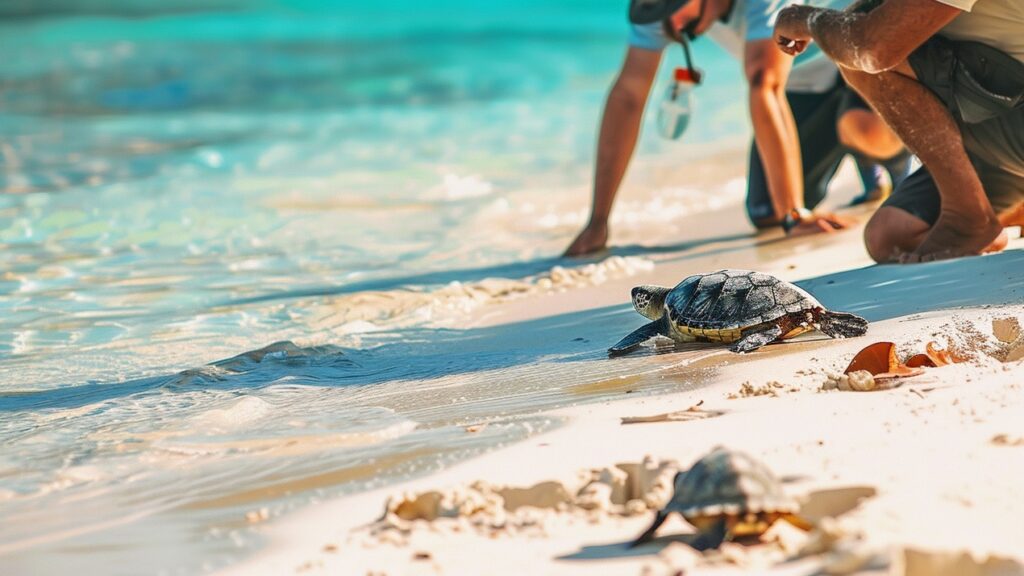
Darwin Island, part of the majestic Galápagos archipelago, offers a unique blend of breathtaking adventure and critical conservation efforts. This untouched paradise, rich in history and biodiversity, invites visitors to explore its natural wonders and participate in its preservation.
Recognised as one of the world’s premier diving destinations, Darwin Island’s waters are alive with an astonishing variety of marine life, including iconic hammerhead sharks, majestic whale sharks, and playful sea lions.
The skies and lands of Darwin Island are:
- A haven for bird enthusiasts.
- Hosting unique species such as the renowned Darwin’s finches.
- The majestic frigatebirds.
- The elusive red-footed boobies.
For those who prefer to stay on dry land, Darwin Island’s rugged terrain offers challenging hikes rich in scenic views and geological wonders, providing a glimpse into the volcanic origins of the Galápagos.
The unique ecosystems of Darwin Island and the Galápagos are delicate and highly susceptible to external pressures. Conservation efforts are vital to maintaining the natural balance and ensuring the survival of the island’s endemic species.
Eco-tourism plays a significant role in conservation efforts by raising awareness and generating funding for environmental initiatives. Visitors are encouraged to engage in responsible tourism practices, minimising their impact and contributing to preserving these islands.
Numerous research and restoration projects are underway on Darwin Island and throughout the Galápagos. These projects aim to protect native species, restore habitats, and combat invasive species. These efforts are essential for the long-term sustainability of the islands’ ecosystems.
The conservation of Darwin Island and the Galápagos requires international cooperation and support. These islands are a global treasure, and their preservation is a shared responsibility that extends beyond their shores.
Visitors can contribute to conservation efforts by adopting sustainable practices, such as reducing plastic use, staying on designated paths, and supporting local conservation organisations.
Engaging in citizen science projects offers visitors a hands-on way to contribute to scientific research and conservation efforts in the Galápagos Islands.
Donations and support to organisations working in the Galápagos help fund critical conservation projects and protect the islands for future generations.
Adventure and conservation go hand in hand on Darwin Island and throughout the Galápagos. As we explore these enchanting islands, we also embrace the responsibility to protect and preserve their unique biodiversity. Darwin Island’s legacy is not just one of discovery and science but also of conservation and hope for the future.
Practical Travel Tips for Exploring Darwin Island and the Galápagos
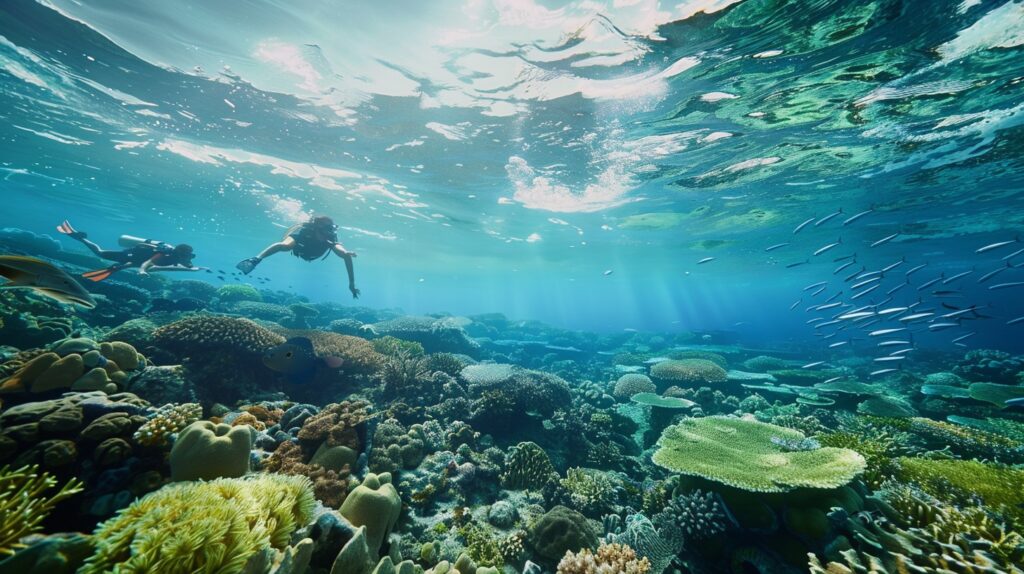
Visiting Darwin Island and the broader Galápagos archipelago offers an unparalleled adventure into the heart of nature’s marvels. Consider these practical travel tips tailored for the conscientious explorer to ensure a memorable and responsible journey.
Best Times to Visit
- Peak Season (June to August and December to January): These months offer warm weather and calmer seas, making them ideal for snorkelling and diving. However, be prepared for higher prices and more tourists.
- Shoulder Season (April to May and September to November): The shoulder seasons present a perfect window for those seeking a balance between pleasant weather and fewer crowds. Wildlife is abundant, and you might find better deals on accommodations and tours.
- Off-Peak Season (February to March): Although the weather can be hotter and wetter, visiting during the off-peak season allows for more intimate encounters with the islands’ wildlife, as fewer tourists are present.
Responsible and Sustainable Tourism Tips
- Follow National Park Guidelines: The Galápagos Islands are a protected national park. Adhere to all guidelines, such as keeping a safe distance from wildlife, not feeding animals, and staying on marked trails.
- Minimise Environmental Impact: Reduce your footprint by using refillable water bottles, avoiding single-use plastics, and choosing eco-friendly sunscreens that won’t harm marine life.
- Choose Responsible Tour Operators: Opt for tour operators committed to sustainable practices. Look for those supporting local conservation efforts and employing knowledgeable local guides.
- Participate in Conservation Initiatives: Engage in volunteer opportunities or donate to local conservation projects. Your contribution can make a significant difference in preserving the islands’ unique ecosystems.
- Educate Yourself Before You Go: The more you know about the Galápagos Islands’ delicate ecosystems and conservation challenges, the more respectful and meaningful your visit will be. Take the time to learn about the islands’ history, wildlife, and ongoing preservation efforts.
- Support Local Communities: Whenever possible, support local businesses. Whether buying souvenirs, dining out, or choosing accommodations, opting for local services helps distribute tourism benefits within the community.
- Leave No Trace: Take all your rubbish with you or dispose of it in designated areas. The principle of leaving no trace ensures that you leave the islands as untouched and pristine as you found them.
By following these practical travel tips, your visit to Darwin Island and the Galápagos Islands will be an extraordinary adventure and a contribution to the ongoing efforts to preserve this unique corner of the planet. Responsible tourism ensures that these wonders continue to inspire and educate future generations, just as they have since Charles Darwin’s time.
Darwin Island Today: A Testament to Nature’s Resilience and Human Stewardship
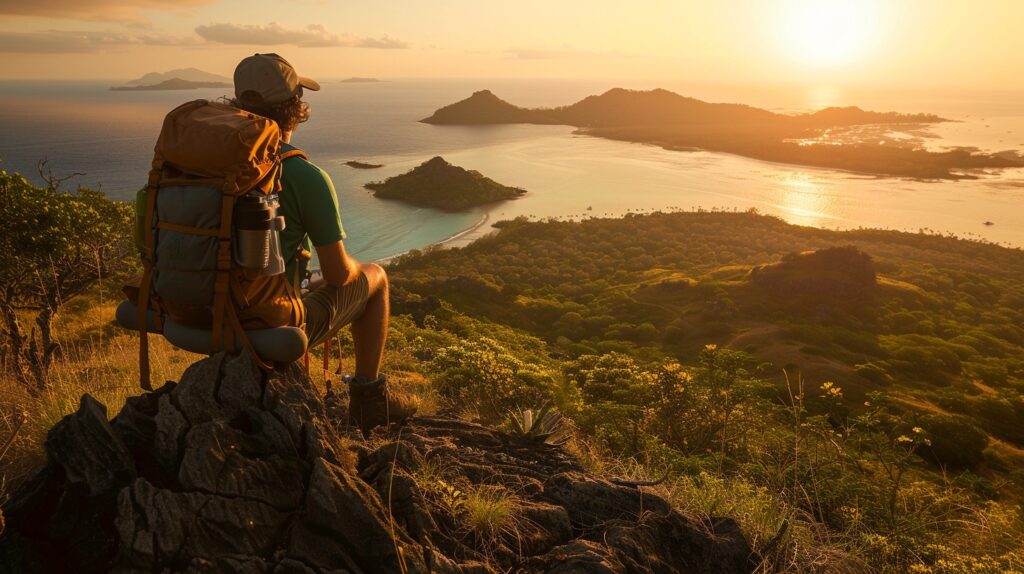
Darwin Island remains one of the most pristine and least disturbed islands in the Galápagos archipelago, a true testament to the enduring legacy of natural selection that Charles Darwin once studied. Today, the island continues to be a focal point for both conservation efforts and the sustainable management of tourism, ensuring that its unique biodiversity is preserved for future generations.
Despite its remote location and challenging terrain, Darwin Island is home to a diverse array of species, many of which are endemic to the Galápagos. Its cliffs and waters are bustling with life, from the soaring frigatebirds and red-footed boobies to the majestic whale sharks and playful sea lions that inhabit its surrounding seas.
The lack of human settlement or direct impact on Darwin Island has allowed its ecosystems to thrive virtually untouched. This has made the island an invaluable site for scientific research, offering insights into the natural processes of evolution and adaptation.
The Galápagos National Park Directorate (GNPD) oversees the management of Darwin Island, implementing strict regulations to minimise the impact of tourism. Visitor access is highly regulated, with specific sites designated for diving and no landings allowed on the island.
Tour operators in the Galápagos must adhere to eco-friendly practices, minimise waste, avoid disturbances to wildlife, and educate visitors on the importance of conservation. These measures ensure that tourism remains a positive force for conservation funding without compromising the islands’ ecological integrity.
Ongoing scientific research and environmental monitoring are crucial to the island’s management strategy. These efforts help track ecosystem health, assess the impact of climate change, and guide conservation decisions.
Local communities play an active role in conserving the Galápagos Islands. Through education and sustainable livelihood programs, residents are empowered to protect their natural heritage while benefiting from responsible tourism.
The Road Ahead
Climate change and the risk of invasive species present ongoing challenges to Darwin Island’s conservation. The GNPD and international partners mitigate these threats through adaptive management strategies and global collaboration.
Darwin Island serves as a model for balancing conservation with sustainable use. It demonstrates that it is possible to welcome visitors while preserving the natural world. Its management practices offer valuable lessons for conservation efforts worldwide.
Nowadays, Darwin Island stands as a beacon of hope in the conservation world, embodying the principles of resilience, adaptability, and stewardship. As we look to the future, the island continues to inspire a global commitment to preserving our planet’s natural wonders, just as it inspired Charles Darwin more than a century ago.
Conclusion: Darwin Island – A Legacy of Discovery and Conservation
Darwin Island, a jewel within the Galápagos Archipelago, stands as a monument to the awe-inspiring power of nature and the profound insights into evolution that it provided to Charles Darwin. This isolated enclave of biodiversity not only captivates the imagination of travellers and scientists alike but also serves as a critical battleground for conservation efforts to preserve its unique ecological heritage.
Darwin Island offers an unparalleled opportunity to witness the dynamics of evolution and natural selection in real time, much like Darwin himself observed over a century ago. Its unique flora and fauna continue to be a source of fascination and study for biologists and ecologists worldwide.
The underwater landscapes around Darwin Island are among the most pristine and vibrant on the planet. They provide an aquatic sanctuary for an astounding variety of marine life, making it a must-visit destination for divers seeking encounters with the ocean’s giants.
A Call to Action
- Explore with Respect: We invite you to explore the wonders of Darwin Island and the Galápagos but do so with a deep respect for the natural world. Let your visit be guided by curiosity and a commitment to leaving no trace behind.
- Learn and Share: Take the time to learn about the unique ecosystems of the Galápagos and the challenges they face. Share this knowledge with others, spreading awareness of the importance of conservation and the role each of us can play.
- Contribute to Conservation: Consider supporting conservation efforts in the Galápagos through donations, volunteering, or simply by choosing tour operators committed to sustainable practices. Every contribution, no matter how small, makes a difference.
Darwin Island, with its mesmerising beauty and scientific significance, invites us to embark on a journey of discovery and reflection. As we follow in Charles Darwin’s footsteps, let us also follow in his legacy of curiosity and conservation, ensuring that the Galápagos Islands continue to inspire and educate future generations. Together, we can protect this historical and natural treasure, a true testament to the wonders of our planet.
FAQ
What did Darwin observe on the Galápagos Islands that was so significant?
Charles Darwin observed variations among species from island to island, most notably the finches with different beak shapes. These observations were crucial in developing his theory of natural selection, suggesting that species adapt over time to their environments.
How can I visit Darwin Island, and what should I expect?
Darwin Island is remote and uninhabited, primarily accessible to visitors through liveaboard diving cruises. Expect an extraordinary diving experience with sightings of hammerhead sharks, whale sharks, and other marine life. To preserve the island’s pristine condition, no land visits are allowed.
Are the Galápagos Islands where Charles Darwin developed his theory of evolution?
Yes, Charles Darwin’s observations in the Galápagos Islands played a pivotal role in the development of his theory of evolution by natural selection, although the theory itself was formulated and refined after his return to England.
What unique wildlife can I see on Darwin Island?
Darwin Island is renowned for its marine life, including hammerhead sharks, whale sharks, manta rays, and sea turtles. The surrounding waters are among the richest in the Galápagos, offering unparalleled diving experiences.
How are the Galápagos Islands and Darwin Island, Ecuador, being protected?
The Galápagos Islands, including Darwin Island, are protected as part of the Galápagos National Park and the Galápagos Marine Reserve. Conservation efforts include strict tourism regulations, scientific research, and initiatives to control invasive species and restore native habitats.
What are the best activities to do on Darwin Island?
The primary activity on Darwin Island is scuba diving, with the famous Darwin Arch offering one of the world’s most spectacular dive sites. Due to the island’s protected status, land visits are not permitted.
How do I get to Darwin Island from mainland Ecuador?
Access to Darwin Island is typically through organised diving cruises that depart from other islands in the Galápagos, such as San Cristobal or Santa Cruz. These cruises often require flying into the Galápagos from mainland Ecuador’s airports in Quito or Guayaquil.
What are the conservation rules visitors need to follow on Darwin Island?
Visitors must follow the Galápagos National Park’s regulations, which include not touching or feeding wildlife, staying on marked trails, collecting natural items, and minimising environmental impact. Specific rules apply for diving and marine activities to protect underwater ecosystems.
Can I stay on Darwin Island, or should I plan day trips?
Darwin Island needs accommodations due to its uninhabited status and the focus on conservation. Visitors typically stay on liveaboard vessels that offer diving trips to Darwin Island and other sites in the Galápagos.
How has Darwin’s work on the Galápagos Islands influenced modern science?
Darwin’s work fundamentally changed the way we understand biological diversity and the process of evolution. It laid the foundation for evolutionary biology and influenced numerous scientific disciplines by providing a natural explanation for the development and diversification of life on Earth.
Join the Club Tripsters Community

Subscribe to stay up to date with the latest:
We hope that this guide has inspired you and equipped you with practical tips for your next adventure. The Club Tripsters community thrives on sharing and learning from each other’s travel experiences. We’re eager to hear about your finds in Paris. Did you come across an exceptional yet affordable restaurant, a lesser-known shopping haven, or a hotel that surprised you with its value? Share your discoveries and tales in the comments below.
But don’t let the journey end here. Our Club Tripsters website is brimming with articles filled with travel insights—from detailed destination guides and thoughtful hotel reviews to savvy travel tips and hacks. Whether your next destination is Rome, New York, Tokyo, or somewhere else entirely, we’re here to support you with seasoned advice and genuine insider knowledge.
So, why not become a part of the Club Tripsters community today? Together, we can explore the vast world of travel, making it more achievable and fulfilling for everyone. We’re excited to hear about your travel stories.
Happy travels, and see you in the Club Tripsters community!
Wanderlust Gifts
-
 Amsterdam, Multicolor Coffee Mug$12.56 – $15.98
Amsterdam, Multicolor Coffee Mug$12.56 – $15.98 -
 Joshua Tree, Multicolor Coffee Mug$12.56 – $15.98
Joshua Tree, Multicolor Coffee Mug$12.56 – $15.98 -
 Santorini, Greece, Multicolor Coffee Mug$12.56 – $15.98
Santorini, Greece, Multicolor Coffee Mug$12.56 – $15.98
-
 Nazca Lines in Peru, Premium Matte Paper Wooden Framed Poster$43.27 – $165.28
Nazca Lines in Peru, Premium Matte Paper Wooden Framed Poster$43.27 – $165.28 -
 Amsterdam, Premium Matte Paper Wooden Framed Poster$43.26 – $165.28
Amsterdam, Premium Matte Paper Wooden Framed Poster$43.26 – $165.28 -
 Santorini, Premium Matte Paper Wooden Framed Poster$43.26 – $165.28
Santorini, Premium Matte Paper Wooden Framed Poster$43.26 – $165.28
Our articles may include affiliate links. This means that we receive a small commission should you decide to purchase anything via these links. It does not incur any additional costs to you but enables us to further our contributions to meaningful projects in noteworthy locations.
Image Disclaimer: Please note that the images used in this article are intended to evoke the mood and atmosphere associated with topic of the article. They are illustrative and do not necessarily depict the exact locations, people or experiences described in the text. Actual amenities, services, and views may vary. We recommend checking with the specific providers and operators for accurate information and visuals.






